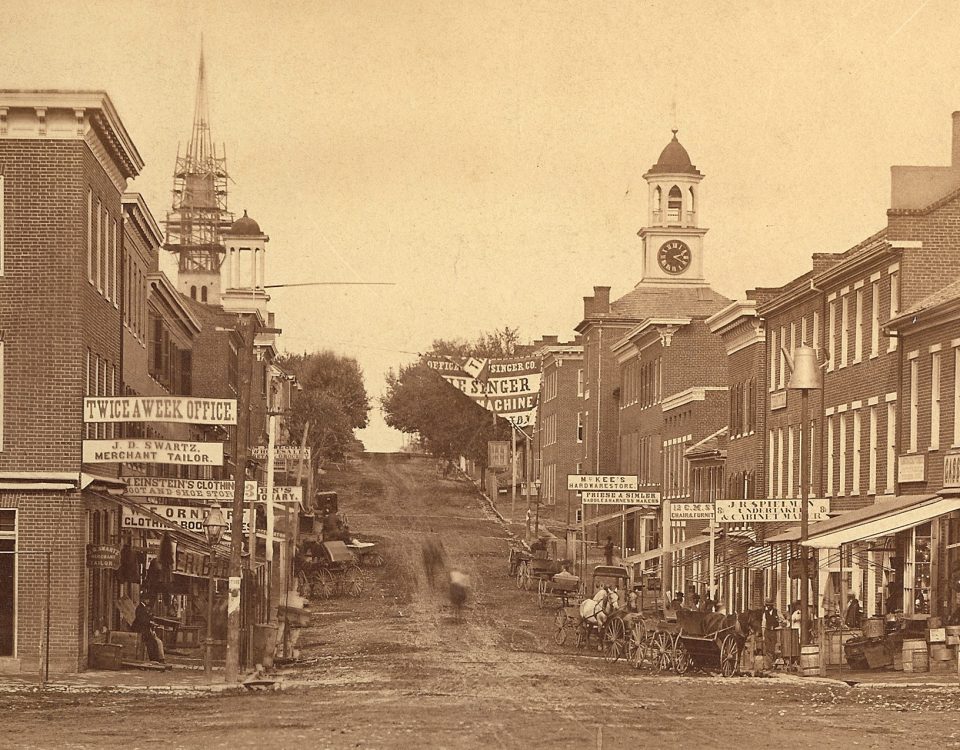Hagerstown’s “Buffalo Soldier” left an indelible mark, and a distinguished legacy
November 11th is Veterans Day. Originally called Armistice Day, and celebrated for the first time on November 11th, 1919, Veterans day was, initially, a day that marked the cessation of World War I, which formally ended at the 11th hour of the 11th day of the 11th month of 1918. Armistice Day was intended as a day to commemorate the lives lost during the Great War. In 1954, Armistice Day was renamed Veterans Day. Today, Veterans Day honors the selfless service and sacrifice of America’s veterans.
Did you know that Washington County is famous for having had at least one participant in every major American military conflict? From Jonathan Hager to Jacob Huyett, Washington County has an extensive military heritage. In honor of Veterans Day, we want to share with you the incredible story of William Othello Wilson, a dedicated soldier, a Medal of Honor recipient, and a native son of Hagerstown.
Born on September 16, 1869 in Hagerstown, Maryland, William Othello Wilson enlisted in the U.S. Army on August 21, 1889, in St. Paul, Minnesota. Assigned to the 9th Cavalry Regiment – one of four completely African-American regiments nicknamed the ‘Buffalo Soldiers’ by warriors of the Cheyenne Native American tribe – the newly-minted Corporal Wilson was immediately sent to South Dakota where, unbeknownst to him, trouble was brewing.
In the late 1800s, in the face of the near-complete annihilation of their culture by the U.S. Government, Native Americans, desperate for reprieve, began to practice the Ghost Dance (a ceremonial dance initiated by the Paiute leader Wovoka that promised the restoration of the Indian way of life). Seeing the rekindling of Native pride as a result the ceremony, and fearing this would lead to militancy and insurrection, the U.S. Government sent troops into the Dakotas where the Sioux (the primary practitioners of the Ghost Dance) were most prominent. So, with tensions high, Wilson and the 9th Cavalry were sent to South Dakota in December, 1890. They saw action almost immediately.
On December 30, 1890, warriors of the Sioux Tribe, infuriated by a dreadful massacre that had taken place at Wounded Knee the day before, attacked the 9th Cavalry supply train and cut off the wagons. The 9th Cavalry had been out in search of Chief Big Foot. In the chaos, Captain John S. Loud, seeing the troop was overwhelmed, wrote a dispatch to Major John Henry at the Pine Ridge Agency, begging for help. After several scouts refused to deliver the message, William Wilson, brave to the last, stepped forward and volunteered. So it was that with infuriated Sioux warriors in pursuit, Corporal Wilson made the daring ride to Pine Ridge Agency. Against all odds, he made it, and, by his actions, the lives of his comrades were saved. For his bravery and gallantry during the Sioux Campaign in South Dakota, on September 17, 1891, William Othello Wilson was awarded the Medal of Honor. Wilson was the last African American soldier to earn the coveted Medal of Honor on American soil.
William Wilson returned to Hagerstown, Maryland in 1898, where he spent the remainder of his days in peace. He passed away on January 18, 1928, and was buried in Rose Hill Cemetery.




















